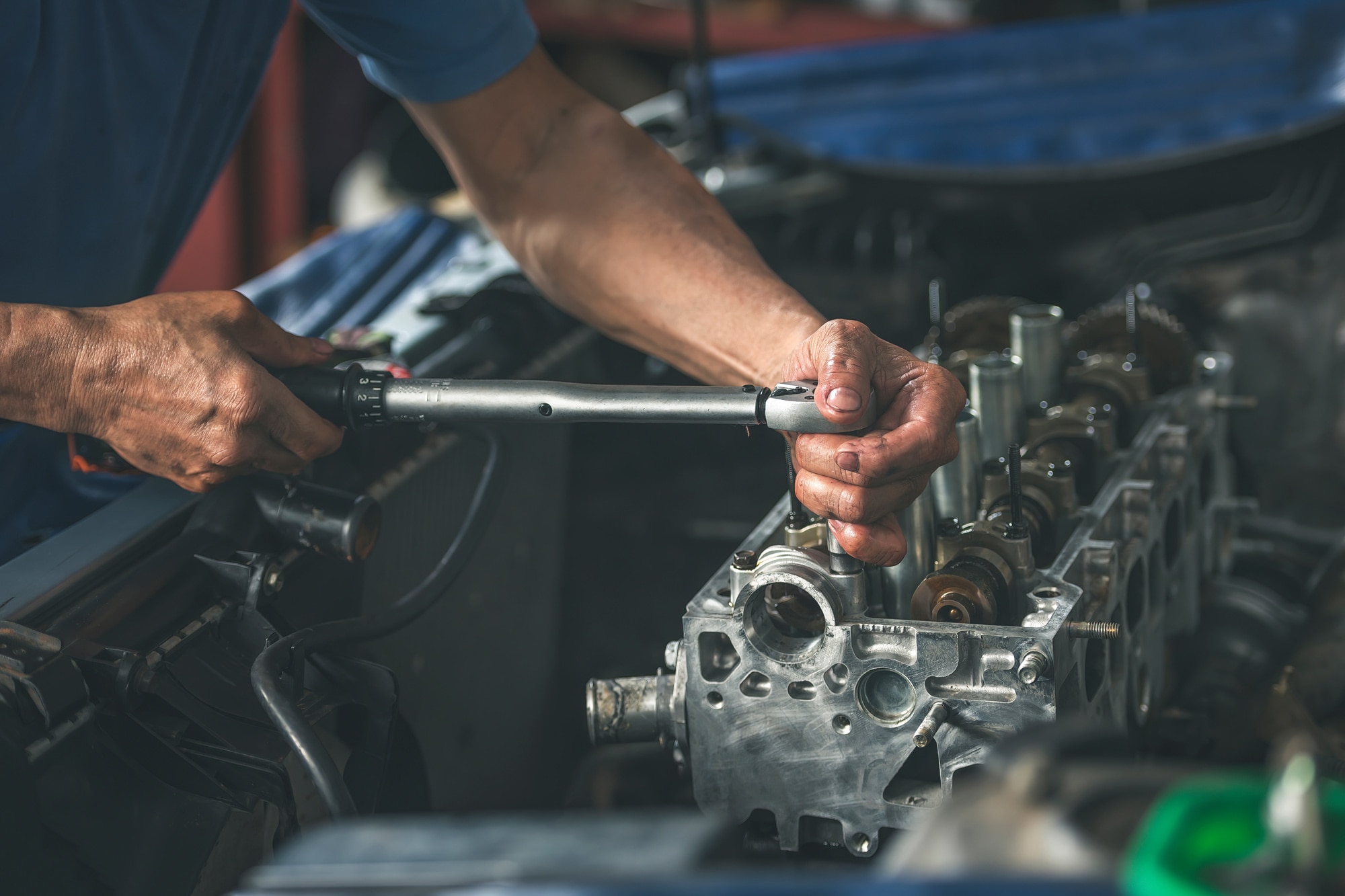What Is a Torque Wrench?
This precision tool is the right one to use for many sensitive automotive repairs and maintenance jobs.
 Shutterstock
Shutterstock
The more involved you become in do-it-yourself automotive repairs and maintenance, the greater the variety of tools you'll find yourself seeking out to make sure you get the job done right. One of the most common next-level tools for shade-tree mechanics is the torque wrench.
This device, which combines precision measurement with the ability to tighten fasteners, bolts, and other components, can take many different forms but ultimately serves the same purpose: making sure that you can get a bolt tight enough to secure the parts it's holding but not so tight that something breaks.
What is a torque wrench, how does it work, and when do you need to use one? Here's an overview of this important tool that explains why it deserves a place in your garage.
A Torque Wrench Is a Precision Tool
Like other wrenches, a torque wrench is designed to apply force to a bolt or nut in an effort to tighten it. What makes a torque wrench different from a standard wrench is its ability to precisely limit the amount of twisting, or rotational force — which is another definition for torque — that is being applied.
How does that work? Torque wrenches feature a user-adjustable setting that limits the amount of twisting force according to what the job requires. This is often measured in pound-feet or Newton-meters and allows for a precise amount of rotation to be used every single time.
It might seem like a simple thing, but it's also important to note that a torque wrench is not designed to be used to loosen bolts. Doing so can make a tool's calibration less accurate by unknowingly exceeding its maximum torque rating.
There Are Several Common Types of Torque Wrench
There are several different torque wrench designs available. Perhaps the most common is the "click" type, named after the sound it makes when the specified amount of torque has been reached while tightening. These wrenches are long and cylindrical and feature a handle that can be spun up and down in order to select the desired level of torque.
Next up is the digital torque wrench, also known as an electronic torque wrench. These tools incorporate a gauge that actively measures torque and displays it on the handle of the wrench while it is being used. It can also provide alerts when the desired level of torque has been applied. The utility of this device goes beyond click-type wrenches, as some models can record torque, use multiple presets for torque levels, and export records of their use via USB.
Beam type torque wrenches are less common among DIY project fans, but they provide very precise measurements over a long period of time. The trade-off is a more complicated interface for reading and setting torque than either a digital or a click wrench.
Other less common types of torque wrenches include those that slip automatically when they reach their preset torque level and those that rely on a mechanical dial to show the rotational force that is being applied.
Torque Wrenches Are Used When Precise Amounts of Force Are Needed
When working on a vehicle, "tight enough" isn't the actual standard to which things such as bolts, nuts, spark plugs, and wheel lugs should be installed. Dig a little deeper into a given project, and you'll discover that many automobile components come with their own recommended or required amount of torque to be applied during installation.
The only way to measure the exact amount of rotational force you are using is with a torque wrench, which makes this a vital tool when working on torque-sensitive parts.
The most basic use of a torque wrench for most people is when installing wheel lugs or lug nuts. Over-tightening these fasteners runs the risk of snapping off the lugs or damaging the rim, while under-tightening them can create a situation where they vibrate themselves loose and fall off, which can lead to the wheel separating from the vehicle.
Installing engine head bolts is another common job that requires a precise level of torque when tightening so as not to damage the components or the bolts themselves. The list of items in an automobile that require the use of a torque wrench for proper installation is long and includes exhaust manifold bolts, suspension components (such as strut mount bolts), engine accessory pulley bolts, and internal engine components.
Torque Wrenches Require Special Care and Maintenance
Torque wrenches are calibrated from the factory in order to correctly detect and display or alert you to the amount of rotational force you are applying. Over time, some torque wrench designs can stray from this calibration, particularly if they are frequently dropped. Regular use can also lead to a mismatch between calibrated values and reality, with wrenches generally good for a specific number of use cycles before they need to be recalibrated.
Torque wrenches further need to be stored properly after they have been used. Specifically, they should be set to zero or the minimum torque value when the job is done so as to prevent them from losing the linearity of their calibration while waiting between uses. This is specifically true of designs such as click wrenches, which make use of a spring as part of its torque-sensing mechanism. Electronic wrenches do not function in the same way and don't have a zero-out feature.
Written by humans.
Edited by humans.
 Benjamin Hunting
Benjamin HuntingBenjamin Hunting is a writer and podcast host who contributes to a number of newspapers, automotive magazines, and online publications. More than a decade into his career, he enjoys keeping the shiny side up during track days and always has one too many classic vehicle projects partially disassembled in his garage at any given time. Remember, if it's not leaking, it's probably empty.
Related articles
View more related articles